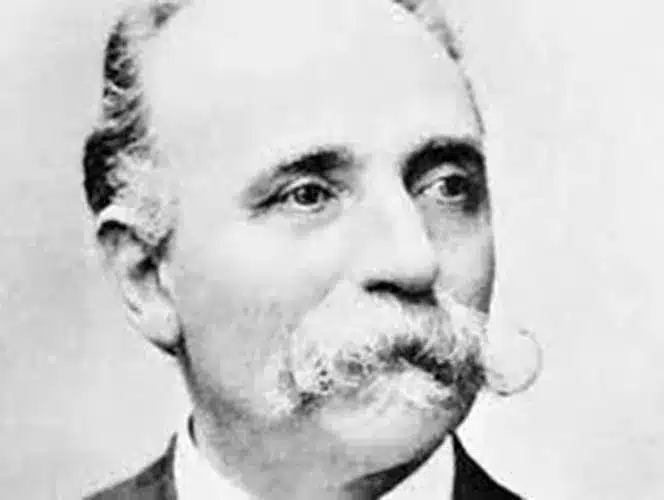The Life and Achievements of Camillo Golgi

Camillo Golgi (7 July 1843 – 21 January 1926) was an Italian physician and cytologist. He received the Nobel Prize for Physiology or Medicine in 1906.
Early Life And Education
Camillo Golgi was born on July 7, 1843, in Corteno, a village in the mountains near Brescia in northern Italy. His father worked as a district medical officer, which likely influenced Golgi’s interest in medicine. Golgi pursued his medical education at the University of Pavia, where he graduated in 1865. During his studies, he worked under notable figures such as Cesare Lombroso and Giulio Bizzozero, who introduced him to experimental research and histological techniques.
Career And Achievements
Camillo Golgi was an influential Italian physician and cytologist, studied medicine at the University of Pavia, where he was greatly influenced by his mentors, particularly Bizzozero. Golgi’s career was marked by significant contributions to neuroscience and histology. One of his most notable achievements was the development of the “black reaction” or Golgi stain in 1873, a revolutionary method using silver nitrate to stain nerve cells, which allowed for detailed visualization of the nervous system. Golgi’s work led to the discovery of several key structures in the nervous system, including the Golgi apparatus, a critical component in the modification and transport of proteins within cells. He also identified the Golgi tendon organ and Golgi cells, which are essential for understanding the nervous system’s structure and function. His research on malaria was groundbreaking, as he identified different species of the Plasmodium parasite and their corresponding fever patterns.
In recognition of his contributions, Golgi received numerous honors and awards. He shared the 1906 Nobel Prize in Physiology or Medicine with Santiago Ramón y Cajal for their work on the structure of the nervous system. Golgi was also appointed as a Senator of the Kingdom of Italy and served as the Rector of the University of Pavia. His legacy continues to be celebrated, with a hall dedicated to him at the Historical Museum of the University of Pavia, showcasing over 80 certificates of honorary degrees, diplomas, and awards.
Notable Events And Milestones
Camillo Golgi most significant achievements was the development of the “black reaction” or Golgi stain in 1873, which allowed for the detailed visualization of nerve cells. This technique revolutionized the study of the nervous system and led to the discovery of the Golgi apparatus, a critical cellular structure involved in protein modification and transport. In 1906, Golgi was awarded the Nobel Prize in Physiology or Medicine, shared with Santiago Ramón y Cajal, for their work on the structure of the nervous system. Golgi’s impact extends beyond his scientific discoveries. His work laid the foundation for modern neuroscience, influencing countless researchers and advancing our understanding of the brain. The Golgi apparatus remains a fundamental concept in cell biology, essential for various cellular processes. Additionally, his research on malaria contributed to the understanding of the disease’s life cycle and its impact on human health. Golgi’s legacy is evident in the continued use of his staining techniques and the ongoing relevance of his discoveries in both medical and biological sciences. He died on 21 January 1926, in Pavia, Italy.
Awards And Honors
Camillo Golgi, an Italian physician and cytologist, received several notable awards and honors for his groundbreaking work in neuroscience and histology. Here are some of the most significant recognitions:
- **Nobel Prize in Physiology or Medicine (1906)**: Golgi shared this prestigious award with Santiago Ramón y Cajal for their work on the structure of the nervous system.
- **Honorary Degrees and Diplomas**: Golgi received more than 80 certificates of honorary degrees, diplomas, and awards throughout his career.
- **Senator of the Kingdom of Italy**: He was made a senator in recognition of his contributions to science and medicine.
- **Rector of the University of Pavia**: Golgi served as the rector of this university, highlighting his influence in academia.
These honors reflect Golgi’s significant impact on the scientific community and his lasting legacy in the field of neuroscience.
Additional Resources
To delve deeper into the life and contributions of Camillo Golgi, here are some excellent resources:
Books
- **”The Hidden Structure: A Scientific Biography of Camillo Golgi”** by Paolo Mazzarello – This biography provides a comprehensive look at Golgi’s experiments, ideas, and personal life.
- **”Golgi: A Biography of the Founder of Modern Neuroscience”** by Paolo Mazzarello – This book details Golgi’s significant contributions to neuroscience, cell biology, and medical microbiology.
Documentaries
While there are no specific documentaries solely focused on Camillo Golgi, you can find valuable information in broader documentaries about the history of neuroscience and notable scientists. Websites like NobelPrize.org offer detailed articles and videos about Golgi’s life and discoveries.
Museums
- **Museo Camillo Golgi** – Located at Palazzo Botta in Pavia, Italy, this museum showcases Golgi’s most important discoveries and personal artifacts. It offers a deep dive into his scientific achievements and the history of biomedical research.
- **University of Pavia History Museum** – This museum features a hall dedicated to Golgi, displaying numerous certificates, diplomas, and awards he received throughout his career.
These resources provide a thorough understanding of Camillo Golgi’s impact on science and his enduring legacy.
Observer Voice is the one stop site for National, International news, Sports, Editor’s Choice, Art/culture contents, Quotes and much more. We also cover historical contents. Historical contents includes World History, Indian History, and what happened today. The website also covers Entertainment across the India and World.

